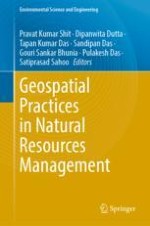This book provides a multidisciplinary synthesis of the sustainable management of natural resources. The book presents applicable knowledge of land, water, and forest resources along with in-depth investigations of multiple management pathways. This book also demonstrated the contemporary applications of geospatial technology in data mining techniques, data analysis, modeling, assessment, and visualization, and appropriate management strategies in different aspects of natural resources. The book explores the latest state-of-the-art techniques using open-source software, statistical programming, and modeling platforms, including artificial intelligence techniques in natural resource management. It is a valuable resource for students, researchers, and practitioners in geography, geospatial sciences, and environmental sciences, especially those interested in land, water, and forest resources.
